Travel to Flanders, France
Pack the bikes and head to northern France for an intriguing tour of Flanders, which is not all flat and there is a very friendly welcome
"Pushing up the hills and then coasting down them, we enjoyed what was the most wonderful ride of the holiday"
– Judy Smith
Page contents
- Myth: Flanders is flat and makes for easy cycling
- How it all started
- Friendly welcome
- Motorhoming away from it all
- Cycle route 1: A little detour by numbers
- Cycle route 2: River Lys
- Cycle route 3: Hilly north
- Memorials
- Look for the friterie
- Taking to the water
- Heading to the hills
- Trip overview
- Contact
Words and photos courtesy of Judy Smith
Myth: Flanders is flat and makes for easy cycling
Mythbuster: Flanders is not flat but it makes for a great motorhome tour with bikes on the back. The north may be hilly, but the south of Flanders is indeed very flat, the sort of place you would never ever need a spirit level, and the lovely, gentle countryside makes cycling there a real pleasure
How it all started
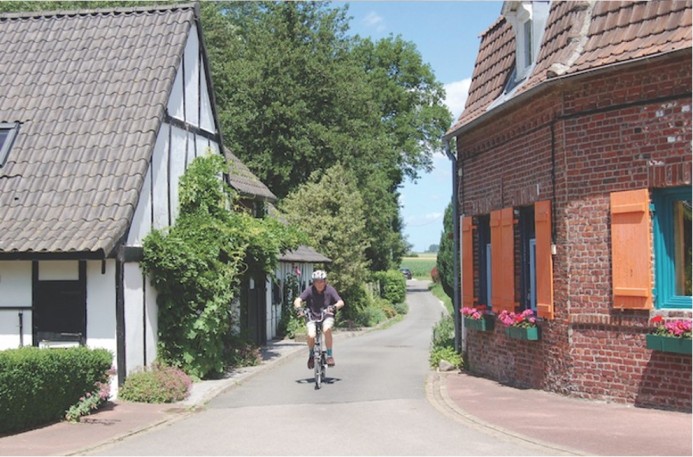
Having wearily pushed our three-geared bikes up some of the steepest hills they’ve ever encountered, we know Flanders is not flat now. Before covid we read a newspaper article about cycling in Flanders.
Flanders had identified all minor roads suitable for safe cycling and endowed every junction with a number. Each junction had become a point de nœud (node-point) bearing its number and having arrows indicating the direction to the next numbered point, something similar to the system in Holland. It sounded perfect for our little Bromptons.
Friendly welcome
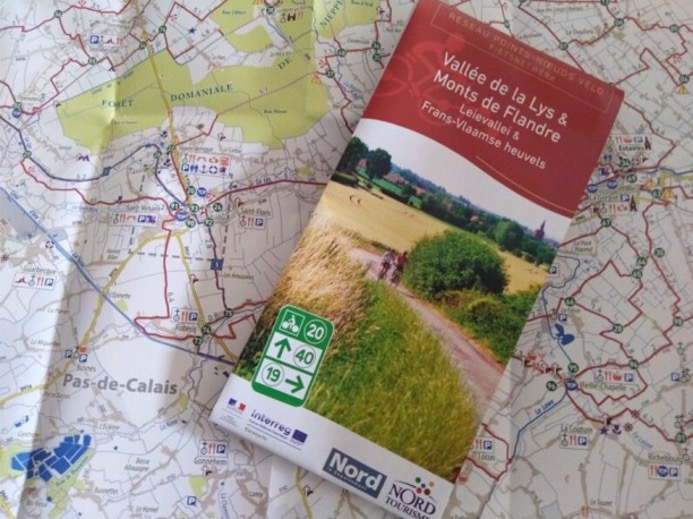
We sent for the newly devised cycling map (Réseau Points-Noeuds Vélo: Vallée de la Lys & Monts de Flandre) and when it returned, accompanied by an assortment of freebies like saddle covers and map clips, we knew we were going to be very welcome. As it turned out, that was an understatement! This map cannot be obtained in the UK, but you can get it from all Flanders tourist offices and bookshops or buy for €8 from Nord Tourisme.
Once we had stocked up at one of those magnificent French supermarkets (oh, the vegetables!) and secured ourselves a campsite, we were off to Tourist Information in the nearest town of Hazebrouck.
We hadn’t reckoned on the reception! Really, we’d come to cycle? How fantastic! Had we got our bikes with us? (No, they were in the ’van down the road.) Never mind, we must still have our photos taken in front of the cycling map of Flanders.
Motorhoming away from it all
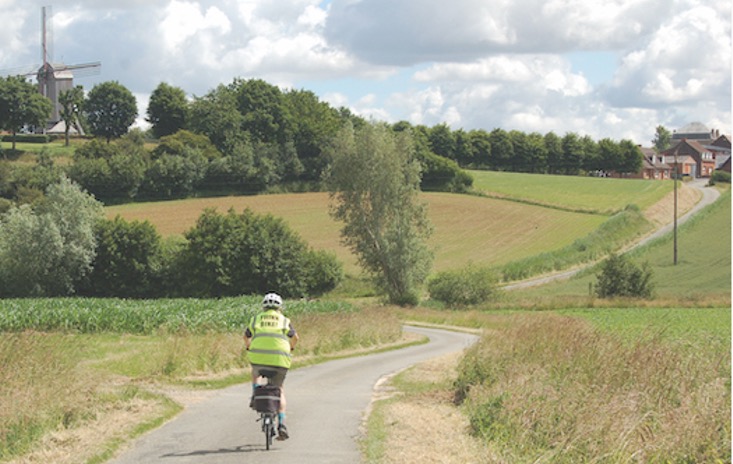
We’d already noticed there were no other British cars in Hazebrouck. Flanders seems to have remained below the tourist radar, still the sort of place everyone passes through quickly, on their way to somewhere else.
Our campsite continued the theme. Admittedly there were few motorhomes, mostly statics, but there was not a Brit in sight, and no one spoke English.
Everyone was very friendly – the madame in charge was lovely and, when I couldn’t understand her rapid cascade of words, she just upped the volume. We were definitely off the beaten track.
Cycle route 1: A little detour by numbers
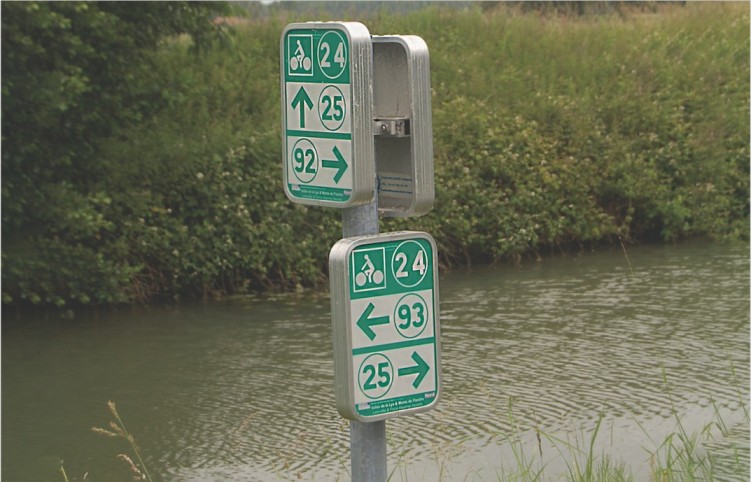
Our first expedition didn’t exactly cover us in glory inasmuch as we tried to do a short circuit from our campsite and, having wrongly identified its position on the map, we spent the first hour going up and down the road outside searching for the appropriate turning and node- point.
Once we’d got the hang of it, though, there was no stopping us. We pursued those numbers relentlessly around the local byways, and it was fun.
Cycle route 2: River Lys
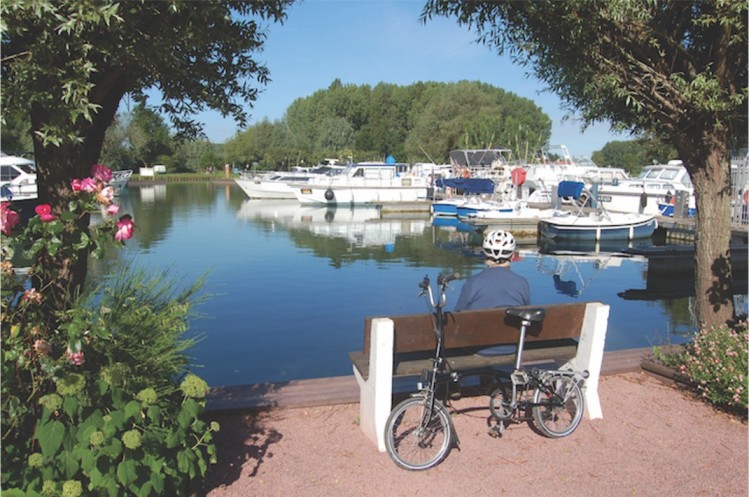
We followed one of the recommended circuits, taking in the River Lys and the forest. Our cycling map marked suitable parking places, and this one was idyllic, right beside a free aire for ’vans on the riverside in the village of Saint-Venant. Just one British ’van was there among the French.
The ride along the river towpath was a dream, with not a ripple in the smooth Tarmac. Things got tougher in the forest, where the track was quite a bit rougher, and the resident flying insects took no time in homing in on our chosen lunch spot.
The compensation for this was a roe deer, which emerged from the trees and stared at us for a few seconds before crashing off into the forest again – and later, a great egret, which rose from the marshy land on the forest edge.
Cycle route 3: Hilly north
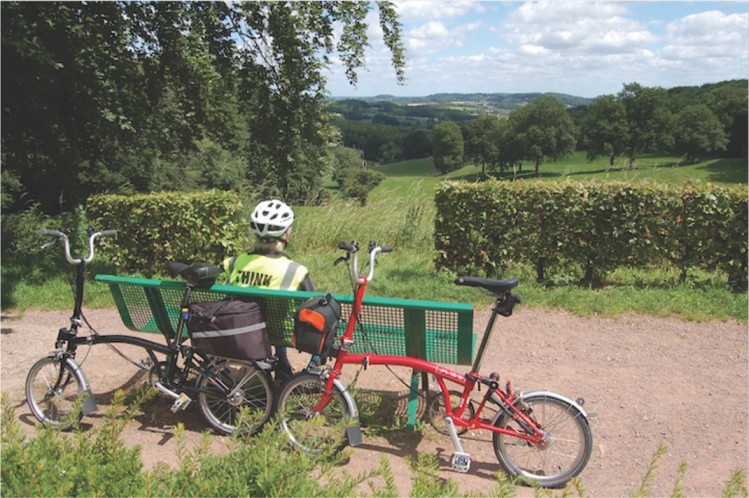
We’d passed up on Cassel, but to do justice to Flanders, we still felt we needed to tackle some of the hilly north by bike. Another of our map’s recommended circuits took in the summits to the east of Cassel, and with a bit of tweaking, we thought we could manage it. Parking was once again easy – everywhere we went there seemed to be lots of space and no height barriers.
Pushing up the hills and then coasting down them, we enjoyed what was the most wonderful ride of the holiday admiring the haymaking in the fields, the ripening crops of corn and the tall stands of hops, the village of Boeschepe’s ancient windmill and viewpoints all along the way made it well worth the effort.
At our final stop at the estaminet (not a very traditional one this time) on the Mont des Cats we sat outside watching the same cyclists puffing up the hill beside us time after time. More thoughts of the Tour de France! Across the road, the Trappist monastery was selling the monks’ own produce – beer, and of course, cheese. We loaded our panniers – it was all downhill from there!
Later we called in at the town of Bailleul, reading that its steeple had World Heritage status. Parking in the central square, we were staggered by the architecture. In the countryside we had enjoyed those ‘chequered’ houses with their gambrel (two-sloped) roofs, but here the architects had had a field day.
Bailleul was completely destroyed in the First World War and, in reconstructing it, every known Flemish Renaissance characteristic had been used – stepped and arched gables, heavy mullioned windows, raised motifs, and more, all decked in bright tasteful colours. Sadly, it wasn’t possible to go up that belfry, but it was pretty handsome all the same.
Memorials
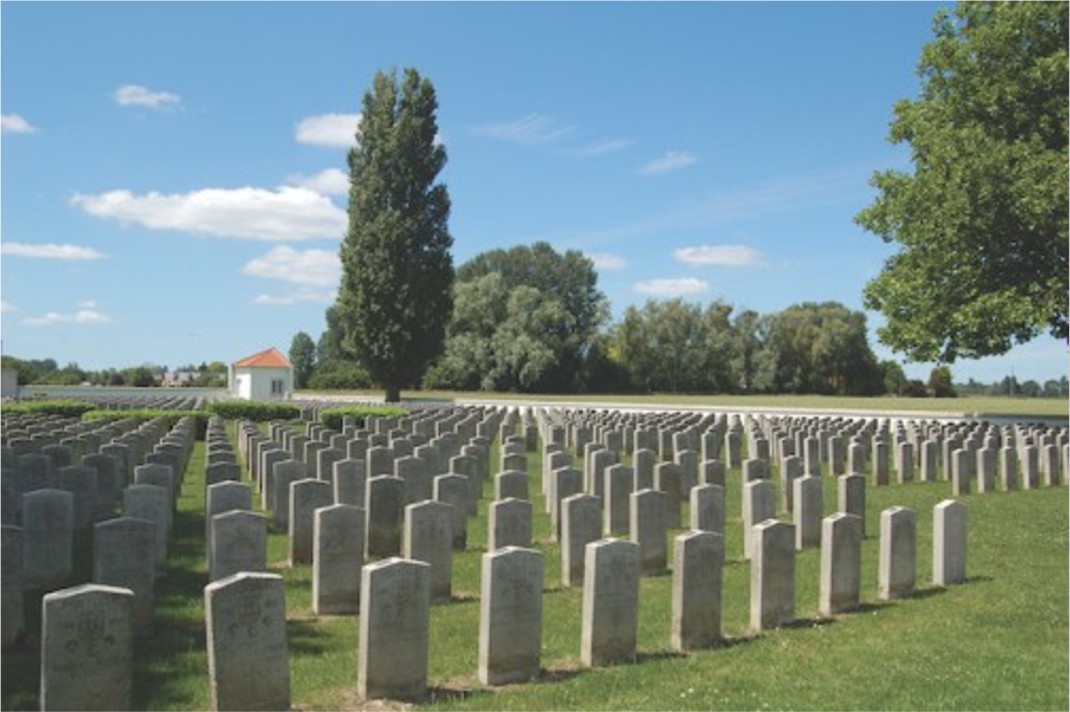
In Flanders fields the poppies blow Between the crosses, row on row ....
Well, the poppies were not much in evidence when we were there – we saw just a few breaking through on the edges of the fields. But the rows of crosses are there, in military cemeteries. Of course, Flanders is a borderland, particularly ravaged by the First World War, and too much blood was spilled there for it ever to be forgotten.
The war cemeteries are for the most part in the south of Flanders, and one of the recommended routes took us out there. It was a reminder that this was a world war – we passed an Indian memorial inscribed with 4,700 names and a vast Portuguese cemetery among others.
Most poignant and most beautiful was a tiny British cemetery in the corner of a field in the village of Neuve-Chapelle, where the handful of white headstones glowed in the sunshine amid beds of blood-red roses.
In another place we were moved by the number of unknown graves inscribed ‘A Soldier of the Great War’, followed by Rudyard Kipling’s well-chosen phrase ‘Known unto God’.
Look for the friterie
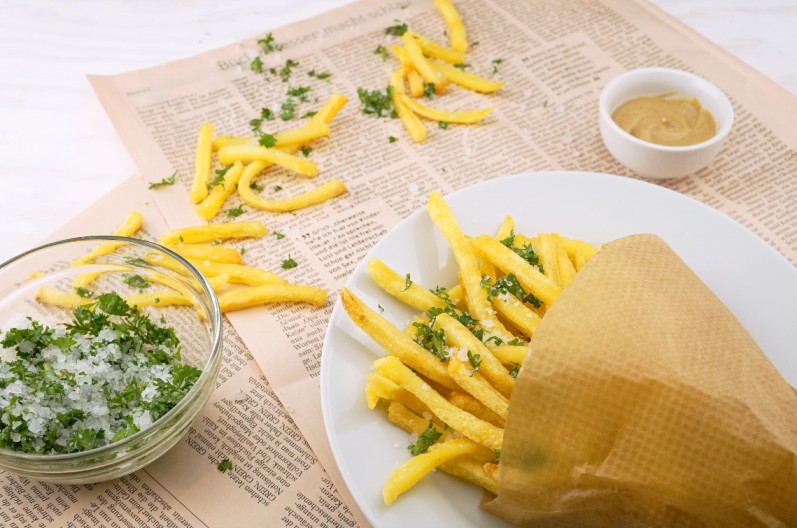
(Photo courtesy of Pixabay)
We noticed a friterie van parked at the end of a short path leading from a village church. The congregation were just leaving – and clearly this was a very acceptable alternative to the traditional Sunday lunch!
Every Flanders village or town appeared to have a friterie in its car park (and sometimes more than one), and I have to say, we took advantage of our local enterprise a few times.
Taking to the water
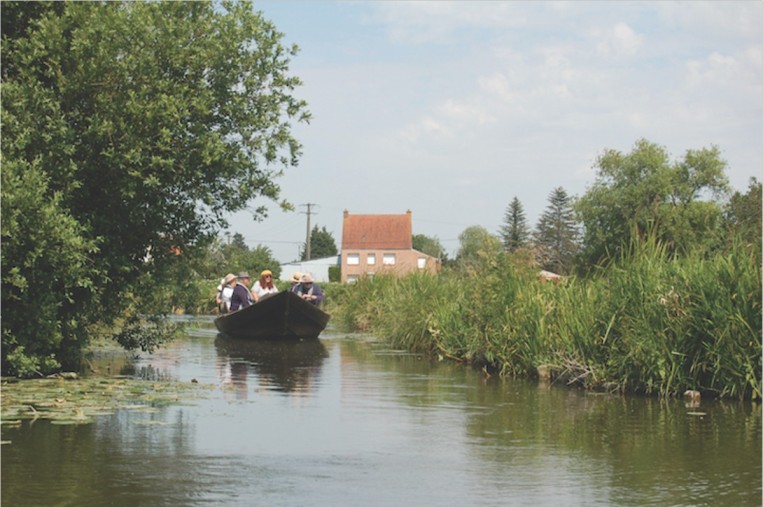
One day we ventured a few miles out of the area that would normally call itself Flanders. To the north and east of St Omer is the Audomarois, a vast area of market gardening, where canals dug by monks hundreds of years ago run between acres of artichokes, cauliflowers, leeks and the rest.
A boat ride here seemed appealing, and we stumbled across a family boat-building business that also hired out canoes and conducted the odd boat trip – although, on that hot day, it did seem that perhaps most of their profits were coming from the large beer tent alongside.
Getting 12 people into a traditional flat-bottomed wooden boat proved an interesting experience, but the subsequent silent electrically driven glide through the vegetable fields with a guide who spoke perfect English (even though we were the only Brits around) was a real treat.
Heading to the hills
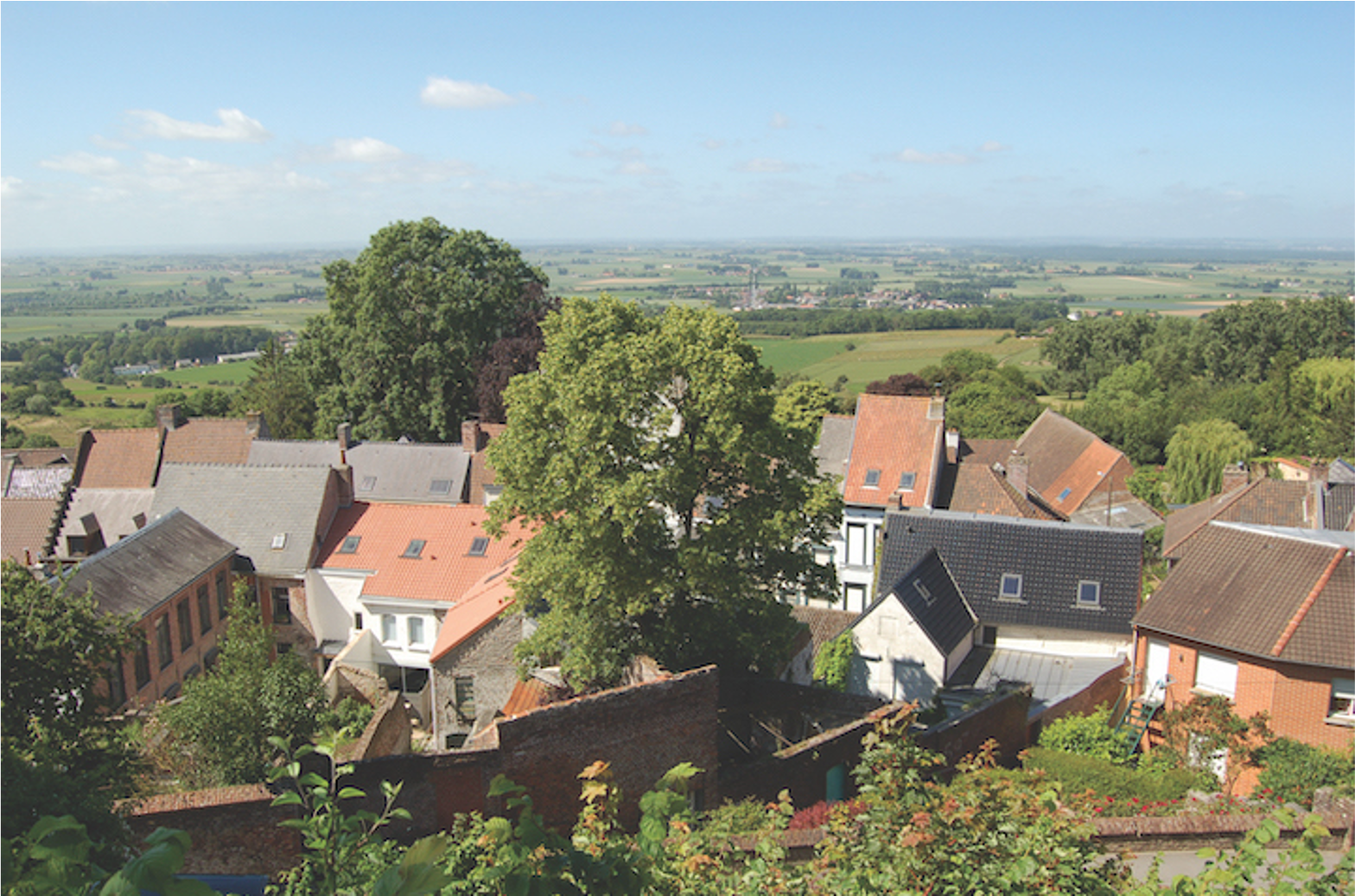
The one part of Flanders that does seem to attract visitors is the hilly north, the area called the Monts des Flandres.
The gem here is the wonderful town of Cassel, perched atop the highest hill in the region. At 176m, that doesn’t amount to very much, but the winding road up to Cassel is very steep, and is obviously used as a practice ground by Flanders’ abundant Tour de France hopefuls.
Discretion being the better part of valour, we thought it wiser to tackle Cassel by ’van rather than by bike. The huge cobbled square at its summit didn’t look too bike-friendly, either, although those racing bikes were impressively managing to skim across it – and apparently the Tour de France would be flying over the cobbles on 5 July. Cartoon-like paintings on every shop window announced the forthcoming event.
Above Cassel’s cobbled square, on its highest point, stands an old wooden windmill and, around its feet, orientation tables look over the red roofs to pick out every feature on the plains stretching below. It was a good place to stop for lunch, and that put us in mind of the several cheese farms in the area that – according to a brochure we’d picked up – were offering demonstrations at weekends.
The ones we visited seemed more interested in sales than demonstrations and, in the last old farm, in a yard teeming with dogs and children, we ended up paying €12 for a small ball of cheese. Whyever did we do that, we thought when we came out – until we tasted that cheese. Heaven!
Trip overview
The costs
Fuel average 29mpg:
£160
Channel crossing outbound £95 and return £180:
£275
Site fees:
£150.76
Attractions Two adults: Boat trip on the Audomarois (les Faiseurs de Bateaux):
£19.47
Total costs:
£605.23
Would we recommend Flanders to our friends at home? Well, we’d certainly do that – we had had an inexpensive crossing of the Channel followed by an hour’s drive, and there we had found a fun cycling system with quiet family-friendly roads and easy places to park the ’van to load and unload the bikes.
Bike hire places were everywhere, along with repair shops, the countryside was attractive, full of interest, and we were in as French an area as we had ever been in, where the people were more than welcoming. Thumbs up for Flanders!
We drove from our home near Llangollen 279 miles to Canterbury, then 18 miles to Dover the next day.
We then drove 316 miles around Flanders and back to Calais, followed by another 281 miles from Folkestone to Llangollen.
Brittany Ferries
There are so many reasons to say ‘0ui’ to a holiday with Brittany Ferries When you say ‘Oui’ to Brittany Ferries, France comes to life the moment you set sail. With space to relax and unwind and award-winning on-board restaurants, there are plenty of reasons to choose Brittany Ferries. Hitch up your caravan, pack up your motorhome or camper and get ready to head off, sailing over by ferry makes it easy.
Free Flexible Ticket upgrade
With a Free Flexible Ticket upgrade (T&C’s apply – see website for details) and low deposits there’s never been a better time to book. Book by 28 February and say Bonjour to France!
Get MMM for just £29.99 a month!

MMM is Britain’s best-selling motorhome magazine and it has been for over 55 years. Each four-weekly issue is packed with the best motorhome travel features, genuine reader reviews of campsites, in-depth motorhome reviews, plus the latest technical advice, buying tips and much more.
MMM’s fully searchable digital library gives you access to the latest issues, plus every edition of MMM since January 2012.
Essential Guide To 2024 Motorhomes And Campervans
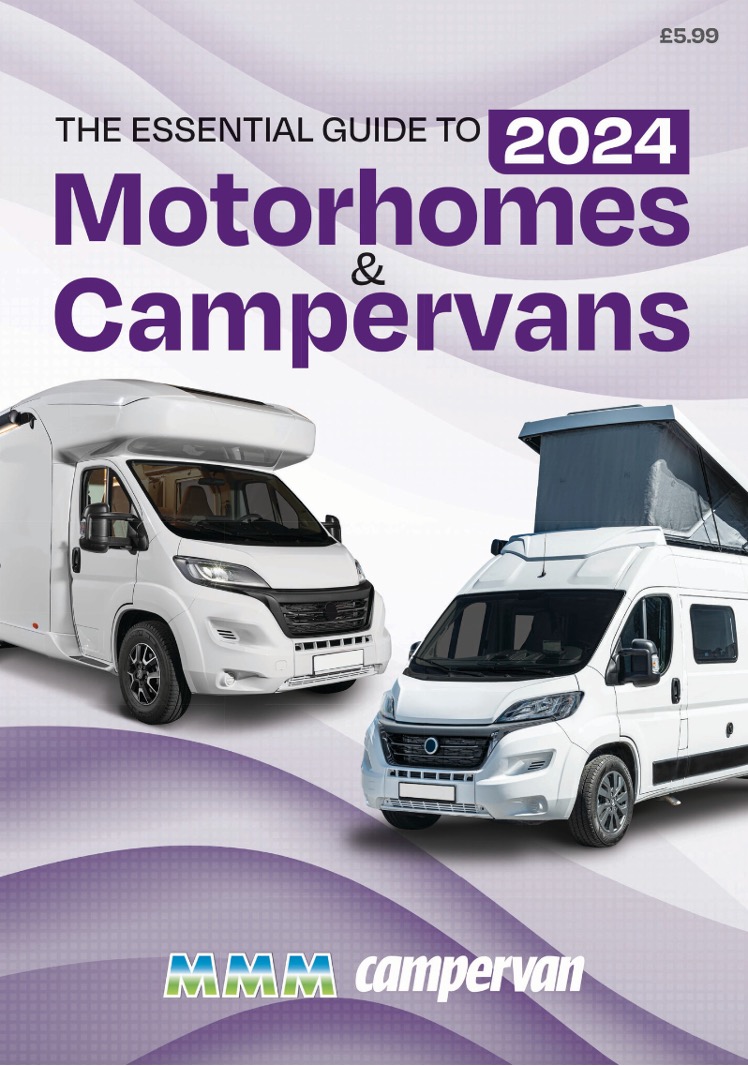
This annual guide is packed with information on the latest launches from UK and European motorhome and campervan manufacturers.
As well as picking out a few key highlights from a selection of manufacturers, we have a new guide to awnings, this year, with information on how to extend your on-site living space.
Download it now from Pocketmags for just £5.99.
Expert motorhome advice to your door!
Why not subscribe to one of our fabulous magazines and get expert advice, travel ideas, technical help and all the latest news for your motorhome and your motorhome adventures!

Want to know more about MMM magazine?
Every month MMM has articles written by motorhomers who have been there and done it, from great UK and European (and further afield) tours, campsite reviews, owners' reports and DIY projects among other things.
MMM's tests, reviews and expert buying guides are not to be missed. MMM's technical advice is a must and includes everything from weekend jobs to longer-term DIY projects. And much more!
About MMM magazine
Want to know more about What Motorhome magazine?
Every issue of What Motorhome magazine provides essential buying advice for anyone looking to buy a new motorhome or campervan or upgrade their existing model. With a pedigree of over 30 years of offering the best motorhome and campervan buying advice, every issue of What Motorhome includes more new motorhome and campervan reviews than you will find in any other magazine.
About What Motorhome
Want to know more about Campervan magazine?
Campervan is the exciting monthly magazine that will give you all the inspiration you need to explore the world in your campervan. Every issue is packed with real-life campervanning experiences, inspiring travel ideas in the UK and further afield, the best campsites to stay on, campervan road tests and reviews of the latest models, and much more!
About Campervan magazine








Recent Updates
Engine management lights: all you need to know
What is the engine management light? What does it mean, and what do I have to do? ...
Motorhome air suspension: all you need to know
Motorhomes are heavy and the additional weight of equipment and height of the bodywork can increase the loads ...
Motorhome WiFi: how to get better motorhome internet
Staying connected on the move is more and more essential, so relying on campsite WiFi isn't an option – here ...
A class of their own - our guide to A-class motorhomes
Thinking of trading up to an A-class, or even going straight to the top of the motorhome tree? We guide you ...
Explore overseas on a motorhome dream tour
Enjoy exotic travel in a campervan or motorhome by hiring, swapping with someone else or exporting your ...
Motorhome water systems: everything you need to know
On-board water is an important part of every motorhome – here’s everything you need to know ...
Campervanning in Europe: what you need to know
Whether you're planning a leisurely drive through the French countryside, navigating bustling city streets in ...
Campervan security: all you need to know
With thefts on the increase, it’s important to know how to keep your campervan secure and prevent campervan ...
Campervan furniture: everything you need to know
Our campervan experts guide you through all the essentials for your campervan, including tables, chairs, ...
Campervan finance: how to fund your purchase
Here we look at the different types of campervan finance available, to help you decide what’s the best option ...
Other Articles
Britain’s best used motorhomes
Want a great motorhome without paying the premium for a new one? Here's a guide to the best you can get in the pre-owned market for each layout, ...
Which motorhome? Choosing the perfect motorhome for you
Choosing a motorhome or campervan is one of the biggest buying decisions you’ll ever make, so it's important ...
Campervan washroom essentials: stay fresh on the road
Our guide will take you through the campervan washroom essentials you'll need so you're well-prepared for ...
Dogs in campervans: all you need to know
Follow our advice and your dog will enjoy campervanning as much as you do ...
Electric campervans: all you need to know
Our guide will take you through everything you need to know about electric campervans and what the future ...
Motorhome electrics: a complete guide to your motorhome electrical set-up
Motorhome electrics can dramatically enhance the convenience and comfort of your vehicle – but they can be ...
Lighting for campervans: all you need to know
We guide you through all the lighting options available for you and your campervan, including interior ...
Electric bikes for motorhomes: our ultimate guide
Read our comprehensive guide to electric bikes for motorhome owners, helping you add electric power to your ...
Our guide to 'cheap' motorhomes in 2024
If you're on the hunt for an affordable new motorhome, this is the best place to start – we've rounded up a ...
Campervans in winter: all you need to know
Here's your guide to preparing your campervan for the colder months, whether you will be using it or putting ...